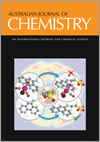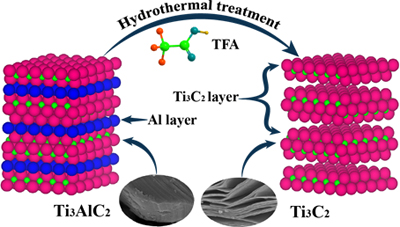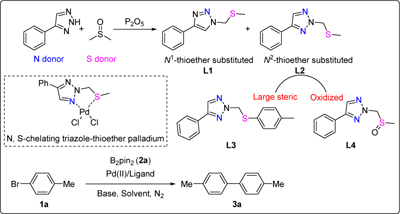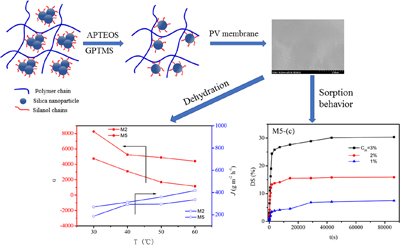
The preparation of nano-ZnO/alginate films with strong antibacterial activity that can be used as a new type of wound healing agent in the future is reported. The films are of great significance for the development of new antibacterial agents.

Australian Journal of Chemistry
Volume 75 Number 10 2022

The preparation of nano-ZnO/alginate films with strong antibacterial activity that can be used as a new type of wound healing agent in the future is reported. The films are of great significance for the development of new antibacterial agents.

Layered Ti3C2 materials were successfully fabricated from Ti3AlC2 using the low- temperature hydrothermal method in aqueous solutions of TFA. In solvothermal reactions, the TFA released the F negative ions and then reacted with the Al atomic layers to form 2D Ti3C2 materials with layered structure, without the need for corrosive HF.

N,S-Chelating triazole-thioether palladium for the one-pot coupling of aryl halides with bis(pinacolato)diboron is reported for the first time. By changing the surrounding environment of the coordinating sulfur atom, we designed and synthesized oxidized and bulky thioether-substituted triazole ligands, and investigated the catalytic performance of the palladium/triazole system.

The Henry reaction is an important C–C bond-forming reaction giving nitro alkanols, which are useful versatile intermediates in synthetic organic chemistry and the pharmaceutical industry. Among the catalysts employed in the Henry reaction, transition metal complexes and nanoparticles play an important role. This review summarizes the transition metal complex catalysts, metal-free organic catalysts and nanoparticle catalysts for the Henry reaction reported since 2020.

A polyvinyl alcohol (PVA)/SiO2 organic-inorganic hybrid membrane was fabricated using γ-(2,3)-glycidoxy propyl trimethoxysilane (GPTMS) and 3-aminopropyl triethoxysilane (APTEOS) as second coupling agents. The appropriate amount of the second coupling agent of APTEOS or GPTMS effectively prevented the aggregation of silica particles and yielded a more homogeneous dispersion of silica nanoparticles in the PVA matrix. The modified PVA-SiO2/polyacrylonitrile (PAN) composite membrane displayed better dehydration performance in ethyl acetate (EAc) aqueous solutions. The static and dynamic sorptions of PVA-SiO2 hybrid membrane in different EAc/H2O solutions were investigated. At the first 10 min in the whole sorption process, the degree of swelling (DS) of membrane increases quickly in solutions with different water concentrations. After the membrane reaches sorption equilibrium in solutions, the DS remains almost unchanged in the later stage of sorption.

The kinetics of the oxidation of ascorbate can be directly related to the concentration of CuII, which acts as a catalyst.
 , Christopher J. S. Hart, Matthieu Schmit, Emmanuel A. Debele, Snigdha Tiash, Erin Clapper, Tina S. Skinner-Adams and John H. Ryan
, Christopher J. S. Hart, Matthieu Schmit, Emmanuel A. Debele, Snigdha Tiash, Erin Clapper, Tina S. Skinner-Adams and John H. Ryan

A screen of commercially available compounds against the intestinal parasite Giardia duodenalis yielded several dibenz[b,f][1,4]oxazepin-11(10H)-one hits, of which the most potent (0.180 mM) was designated by the vendor as structure 1. However, independently synthesized 1 lacked antigiardial activity. Synthesis of the regioisomer 2 revealed it to be the true structure of the assay hit.
CH22184 Abstract | CH22184 Full Text | CH22184PDF (1.5 MB) | CH22184Supplementary Material (3 MB) Open Access Article